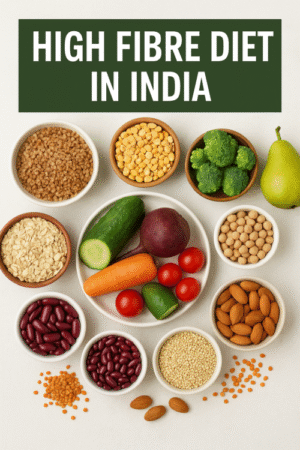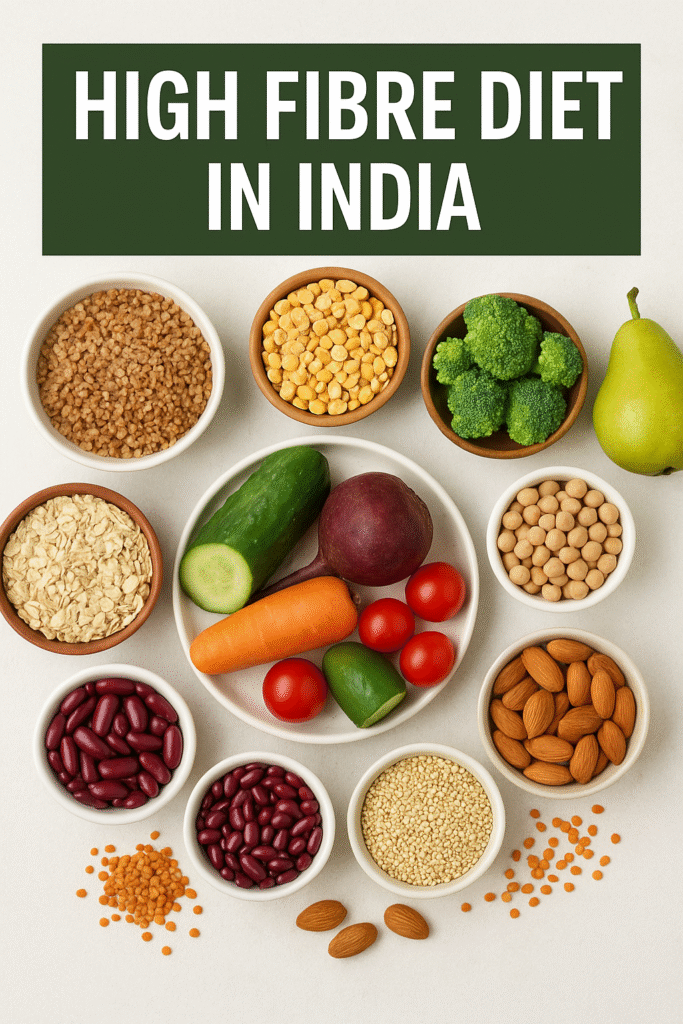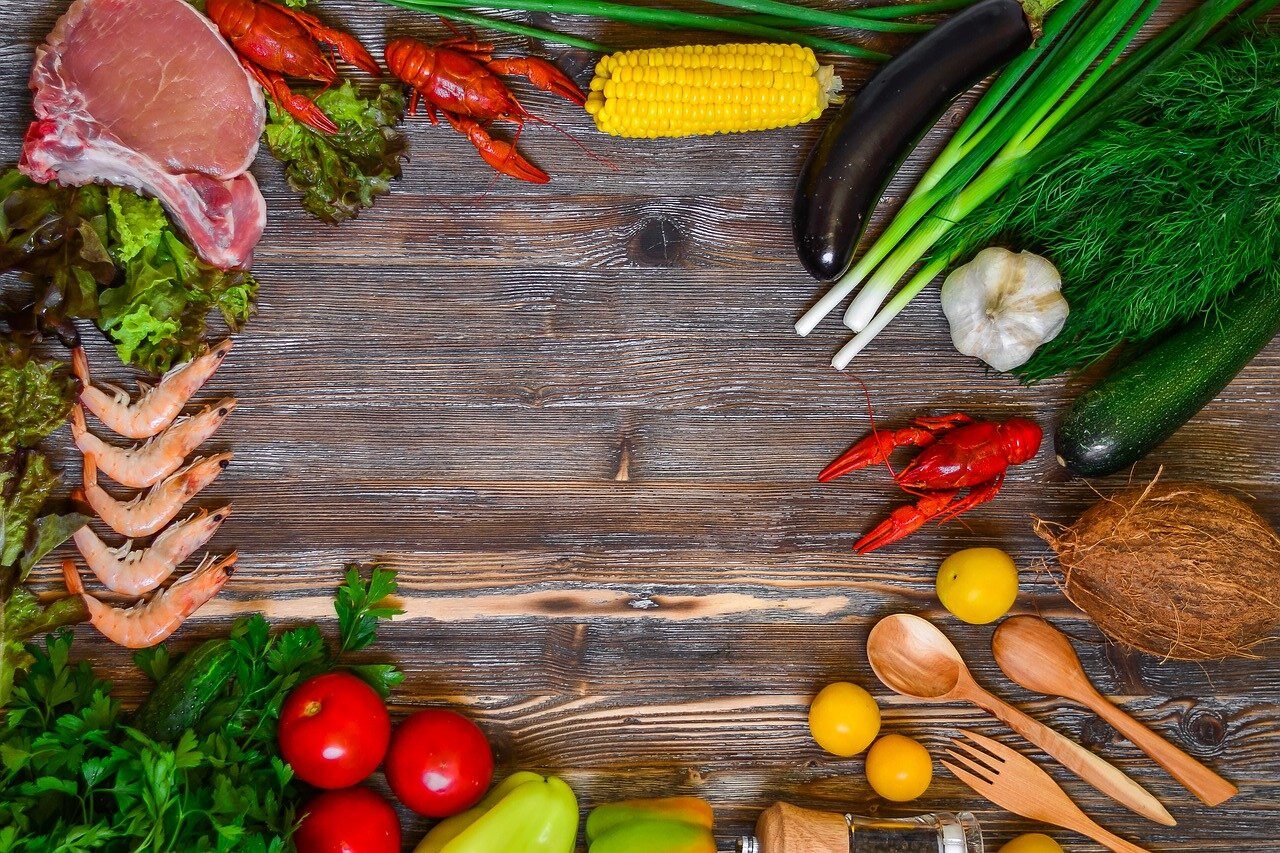High Fibre Diet in India: Benefits, Best Foods & Daily Meal Plan (2025 Guide)
A high fibre diet is one of the easiest and most affordable ways to improve digestion, control weight, manage diabetes, and maintain long-term health. In India, we naturally have several fibre-rich foods—lentils, fruits, vegetables, millets, and seeds—but most people still consume far less than the recommended amount.
This article covers everything you need to know about a high fibre diet in India, including its benefits, best food sources, how much fibre you need daily, and a sample Indian meal plan.
What Is Dietary Fibre?
Dietary fibre is a type of carbohydrate that the body cannot digest. It helps in:
✔ Stimulating digestion
✔ Controlling blood sugar
✔ Supporting heart health
✔ Improving gut bacteria
✔ Supporting weight loss
There are two types:
- Soluble Fibre: Helps control blood sugar & cholesterol
- Insoluble Fibre: Improves digestion & bowel movement
A balanced diet needs both.
How Much Fibre Do You Need Daily?
According to health guidelines:
- Men: 30–35 grams/day
- Women: 25–30 grams/day
- Children: 15–25 grams/day
Most Indians consume less than 50% of this requirement.
Top Benefits of a High Fibre Diet
1. Helps in Weight Loss
Fibre keeps you full longer, reduces overeating, and controls hunger hormones.
2. Controls Blood Sugar (Great for Diabetes)
Slows the absorption of sugar and prevents spikes, making it ideal for diabetics.
3. Improves Digestion
Prevents constipation, bloating, acidity, and irregular bowel movement.
4. Boosts Heart Health
Soluble fibre helps lower LDL (bad cholesterol).
5. Supports Gut Health
Feeds good bacteria and reduces inflammation.
High Fibre Indian Meal Plan (1 Day Sample)
Morning (7 AM)
- Warm water with chia seeds (1 tsp)
OR - Fruit: Guava/Pear
Breakfast (9 AM)
- Oats or Ragi porridge
- Or Poha with veggies
- Or Multigrain roti with paneer
Mid-Morning (11 AM)
- Coconut water + 5 almonds
- Or one banana
Lunch (1 PM)
- 2 Multigrain rotis / Brown rice
- Dal (Masoor/Chole/Rajma)
- Salad: Cucumber, Beetroot, Carrot
- Sabzi: Palak, Lauki, Bhindi
Evening Snack (5 PM)
- Roasted chana
- Or peanut chikki
Dinner (8 PM)
- Vegetable daliya / Millet khichdi
- Mixed veggie sabzi
- 1 bowl curd
Before Bed (10 PM)
- Warm turmeric water
- Or papaya (optional)
High Fibre Diet for Weight Loss
For weight loss:
✔ Add more vegetables to every meal
✔ Replace refined carbs with millets
✔ Use dal + roti + sabzi in balance
✔ Avoid deep-fried snacks
✔ Add chia/flax seeds to breakfast
Foods to Avoid in a High Fibre Diet
❌ White bread
❌ Maida products (naan, samosa, biscuits)
❌ Sugary snacks
❌ Fried food
❌ Packaged noodles
❌ Excessive cheese
Frequently Asked Questions (FAQs)
1. What is the best high fibre food in India?
Guava, oats, ragi, rajma, and chole are among the top.
2. Can fibre help in weight loss?
Yes—fibre keeps you full, reduces cravings, and supports fat loss.
3. How much fibre is too much?
More than 40–45 grams/day may cause bloating or gas.
4. Is a high fibre diet good for diabetes?
Absolutely—fibre slows sugar absorption and controls glucose spikes.
5. Which Indian breakfast is high in fibre?
Oats, poha with veggies, dal cheela, and multigrain roti.
A high fibre diet in India is simple, affordable, and incredibly effective for weight loss, digestion, diabetes control, and overall health. Including dal, millets, veggies, fruits, and seeds daily can help you easily meet your fibre requirement.





